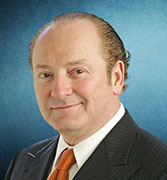
Rather than replicate published benchmarks or arbitrary style boxes, we structure portfolios that target the dimensions of higher expected returns in a cost-effective manner. Our strategy designs are fundamentally different, and backed by scientifically validated investment principles and processes, including the research and rigorous testing by four Nobel Prize winners in Economics.

Rather than replicate published benchmarks or arbitrary style boxes, we structure portfolios that target the dimensions of higher expected returns in a cost-effective manner. Our strategy designs are fundamentally different, and backed by scientifically validated investment principles and processes, including the research and rigorous testing by four Nobel Prize winners in Economics.

Daniel Kahneman
Affiliation: PhD
Princeton University

Eugene Fama
Affiliation: PhD
University of Chicago

Robert Merton
Affiliation: PhD
Massachusetts Institute of Tech

Kenneth French
Affiliation: PhD
Dartmouth College
Designing the Right Portfolio for You
• Your need to take risk. What rate of return do you need to achieve your goals?
• Your ability to take risk. Can you sleep well at night? When the market goes down, do you feel anxiety and stress?
• Your desire to take risk. Do you have a certain rate of return that you want to earn?
Four Components of Portfolio Design
• Portfolio Construction - We follow Modern Portfolio Theory. We are contrarians and do not chase market trends; instead we spread your money out over numerous different assets.
• Low Cost Funds - An active mutual fund will trade in and out of stocks attempting to beat its index. Active trading can be more expensive, increase income taxes paid by you, and more than 80% of the time actively managed funds fail to beat their index over 20 year period. according to the Dimensional study titled “The Fund Landscape 2023: A Study of US-Domiciled Mutual Fund and Exchange-Traded Fund Performance .
• Asset Location - We strategically place investments in different types of accounts
• Spending Strategy - We make Tactical Portfolio Changes particularly when clients are in the decumulation phase.
WMS provides customized investment management. This means thought and research are put into what your portfolio will look like, and when and how it is implemented.
A written Investment Objective (IO) is created to establish guidelines on the expectations of the portfolio. The IO is designed by discussing the following three risk factors:
• Your need to take risk. What rate of return do you require to achieve your objectives?
• Your ability to take risk. Can you sleep well at night? When the market goes down, do you feel anxiety and stress? If so, your current strategy is probably too aggressive for you.
• Your desire to take risk. Do you have a certain rate of return that you want to earn? If you don’t achieve that rate of return, you won’t be happy.
There is a direct correlation between risk and return. The higher return that is targeted the more risk that must be taken. We work with our clients to find an appropriate balance between their need, ability and desire to take risk and therefore target a rate of return. The combination of these factors helps us determine how your investment portfolio should be designed.
After determining how conservative or aggressive of a portfolio is right for you, we work on the portfolio design.
• Portfolio Construction: We follow Modern Portfolio Theory. We are contrarians and do not chase market trends; instead we spread your money out over numerous different assets. This process is called asset allocation and helps clients buy low and sell high. When an asset class does poorly we buy or increase our exposure and when an asset class does well we sell or decrease our exposure. Particularly when markets are volatile it can be difficult for investors to stick with this proven strategy. Through behavioral coaching we help clients understand why we don’t sell out of an asset class.
• Low Cost Funds: We use Passive Investments and Index Funds. Dimensional Funds has incorporated the Science of Investing into the design of their mutual fund portfolios. By using their funds in designing a client’s portfolio we strive to beat an actively managed mutual fund portfolio.
An active mutual fund will trade in and out of stocks attempting to beat its index. Active trading is more expensive, increases income taxes paid by you, and over a 5 to 10 year period more than 80% of the time actively managed funds fail to beat their index. Therefore, 80% of the time you should have better returns by owning a passive and index fund. This is why we use low cost investment vehicles such as no load mutual funds, exchange traded funds (ETFs), and structured products to diversify your portfolio.
• Asset Location: We strategically place investments in different types of accounts. For example, some investments like structured notes are less liquid and are not tax efficient which may be placed in retirement accounts which are tax efficient and illiquid accounts. Conversely, equity index funds tend to be tax efficient and therefore placed in taxable accounts.
• Spending Strategy: We make Tactical Portfolio Changes particularly when clients are in the decumulation phase. When equity markets are doing well, we may spend down or sell equities to generate cash for client living expenses. Conversely, when equity markets are doing poorly we may spend down cash and bonds which may increase a client’s equity exposure. In addition, changes in economic conditions may, on occasion, warrant a change to our recommended asset allocation. Although strategies are reviewed quarterly, changes are not made frequently; a decision not to make a change can be just as valuable as a decision to make a change.

Daniel Kahneman
Affiliation: PhD
Princeton University

Eugene Fama
Affiliation: PhD
University of Chicago

Robert Merton
Affiliation: PhD
Massachusetts Institute of Tech

Kenneth French
Affiliation: PhD
Dartmouth College
Designing the Right Portfolio for You
• Your need to take risk. What rate of return do you need to achieve your goals?
• Your ability to take risk. Can you sleep well at night? When the market goes down, do you feel anxiety and stress?
• Your desire to take risk. Do you have a certain rate of return that you want to earn?
Four Components of Portfolio Design
• Portfolio Construction - We follow Modern Portfolio Theory. We are contrarians and do not chase market trends; instead we spread your money out over numerous different assets.
• Low Cost Funds - An active mutual fund will trade in and out of stocks attempting to beat its index. Active trading can be more expensive, increase income taxes paid by you, and more than 80% of the time actively managed funds fail to beat their index over 20 year period. according to the Dimensional study titled “The Fund Landscape 2023: A Study of US-Domiciled Mutual Fund and Exchange-Traded Fund Performance .
• Asset Location - We strategically place investments in different types of accounts
• Spending Strategy - We make Tactical Portfolio Changes particularly when clients are in the decumulation phase.
WMS provides customized investment management. This means thought and research are put into what your portfolio will look like, and when and how it is implemented.
A written Investment Objective (IO) is created to establish guidelines on the expectations of the portfolio. The IO is designed by discussing the following three risk factors:
• Your need to take risk. What rate of return do you require to achieve your objectives?
• Your ability to take risk. Can you sleep well at night? When the market goes down, do you feel anxiety and stress? If so, your current strategy is probably too aggressive for you.
• Your desire to take risk. Do you have a certain rate of return that you want to earn? If you don’t achieve that rate of return, you won’t be happy.
There is a direct correlation between risk and return. The higher return that is targeted the more risk that must be taken. We work with our clients to find an appropriate balance between their need, ability and desire to take risk and therefore target a rate of return. The combination of these factors helps us determine how your investment portfolio should be designed.
After determining how conservative or aggressive of a portfolio is right for you, we work on the portfolio design.
• Portfolio Construction: We follow Modern Portfolio Theory. We are contrarians and do not chase market trends; instead we spread your money out over numerous different assets. This process is called asset allocation and helps clients buy low and sell high. When an asset class does poorly we buy or increase our exposure and when an asset class does well we sell or decrease our exposure. Particularly when markets are volatile it can be difficult for investors to stick with this proven strategy. Through behavioral coaching we help clients understand why we don’t sell out of an asset class.
• Low Cost Funds: We use Passive Investments and Index Funds. Dimensional Funds has incorporated the Science of Investing into the design of their mutual fund portfolios. By using their funds in designing a client’s portfolio we strive to beat an actively managed mutual fund portfolio.
An active mutual fund will trade in and out of stocks attempting to beat its index. Active trading is more expensive, increases income taxes paid by you, and over a 5 to 10 year period more than 80% of the time actively managed funds fail to beat their index. Therefore, 80% of the time you should have better returns by owning a passive and index fund. This is why we use low cost investment vehicles such as no load mutual funds, exchange traded funds (ETFs), and structured products to diversify your portfolio.
• Asset Location: We strategically place investments in different types of accounts. For example, some investments like structured notes are less liquid and are not tax efficient which may be placed in retirement accounts which are tax efficient and illiquid accounts. Conversely, equity index funds tend to be tax efficient and therefore placed in taxable accounts.
• Spending Strategy: We make Tactical Portfolio Changes particularly when clients are in the decumulation phase. When equity markets are doing well, we may spend down or sell equities to generate cash for client living expenses. Conversely, when equity markets are doing poorly we may spend down cash and bonds which may increase a client’s equity exposure. In addition, changes in economic conditions may, on occasion, warrant a change to our recommended asset allocation. Although strategies are reviewed quarterly, changes are not made frequently; a decision not to make a change can be just as valuable as a decision to make a change.
-

Phone: 480.609.4334
Fax: 480.609.4335
-

General Inquiries:
-

Address
8550 E. Shea Blvd., Suite 130
Scottsdale, AZ 85260
-

Monday - Friday
9:00 am to 5:00 pm
Saturday & Sunday
Closed









